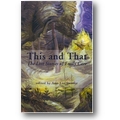

Mather, around 1924, suggested Carr make “Indian Pottery” to sell in her shop. The situation was probably complicated by her personality which was generally accepted as eccentric in the local community. The trigger to produce pottery came from one of her tenants, Kate Mather, who operated a gift shop in Banff. It must have been galling to sideline her art for such things. Notice the priority of pottery in her listing. “I tried to augment my income, small fruit, hens, rabbits, dogs, pottery.” ¹ She gave up on painting for a while as she was forced to become a full-time janitor, landlady and small urban farmer, She expected to generate income by renting out suites in her apartment, Hill House, when she was blind-sided by the First World War’s economic impact. Searching wll bring up images of pottery, paintings and drawings.Įmily Carr, better known as a west coast painter and contemporary of the Group of Seven, for a period in the 1920s was forced by her financial circumstances to produce pottery to survive. Art Gallery of Greater Victoria : a small collection.Vancouver Art Gallery: the site links to the Virtual Museum Collection for a variety of museums.Signature or Mark: Carr’s signature was either painted or incised into the base of her work with some combination of the words “Klee Wyck” and/or the “question mark” symbol Preferred Clay: Dallas Cut clay, Victoria BC probably bisque or earthenware Preferred Kiln Type and Firing Process: wood firing home-made brick kiln.

Carr attained national and international recognition for her paintings in the 1920’s and was associated with the Group of Seven.Types of Work: decorative, non-functional It is decorated to resemble a fish and is signed on the base with the name “Klee Wyck,” the name the Nootka people gave her and which means “Laughing One.” Carr painted the forests and Indigenous villages on the Northwest Coast of Canada and was influenced by the culture and the Indigenous people she met there. As she describes in her autobiography Growing Pains quoted above, it was during this period of financial insecurity that she produced this pottery vessel.

Iconic Canadian painter Emily Carr (1871-1945) struggled for many years to paint and achieve recognition in her early years as an artist.

I hated myself for prostituting Indian Art our Indians did not ‘pot’ their designs were not intended to ornament clay-but I did keep the Indian design pure.”Įmily Carr, Growing Pains: An Autobiography, 1946. Small fruit, hens, rabbits, dogs, pottery…I ornamented my pottery with Indian designs, that was why the tourists bought it.


 0 kommentar(er)
0 kommentar(er)
